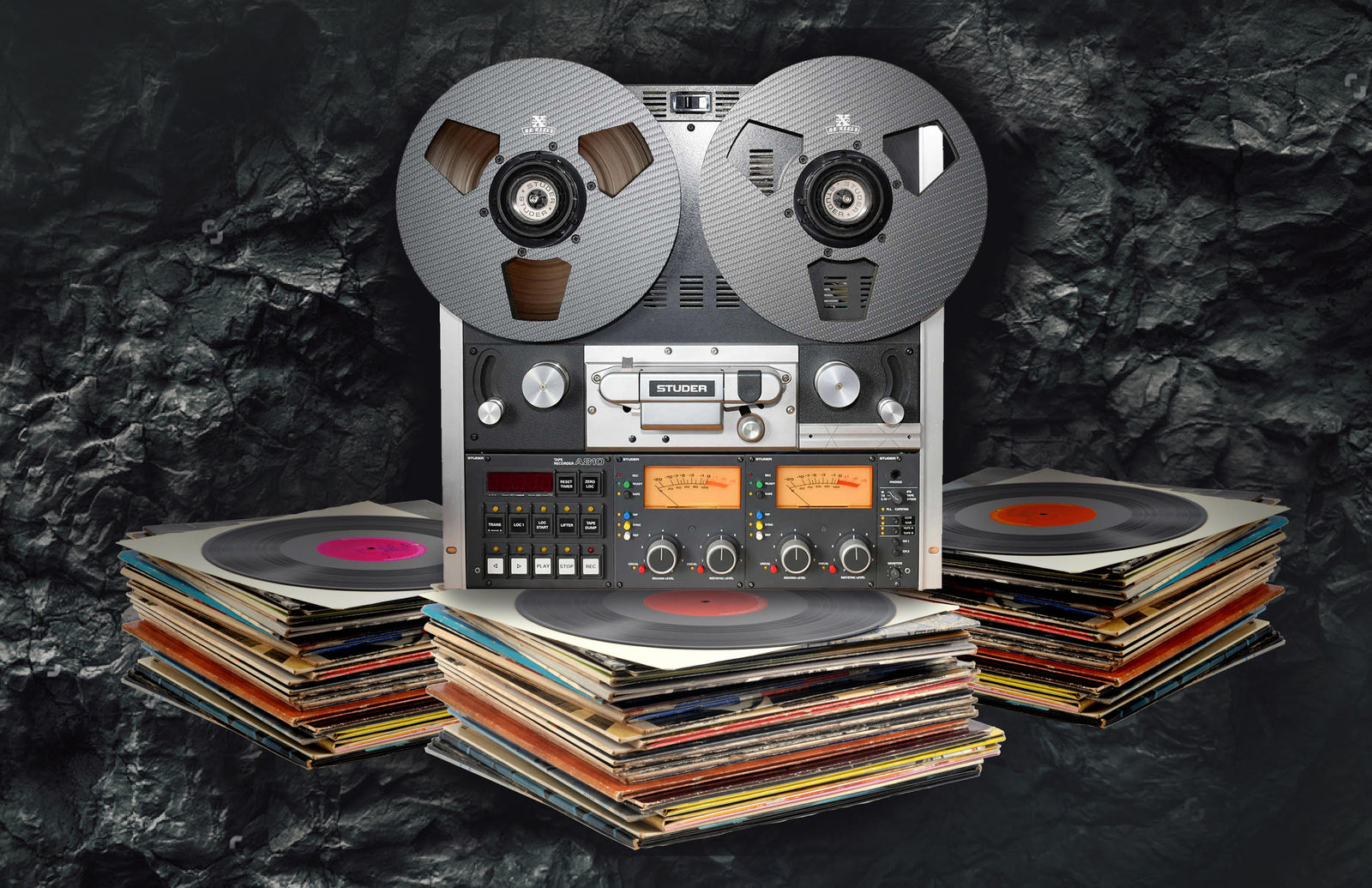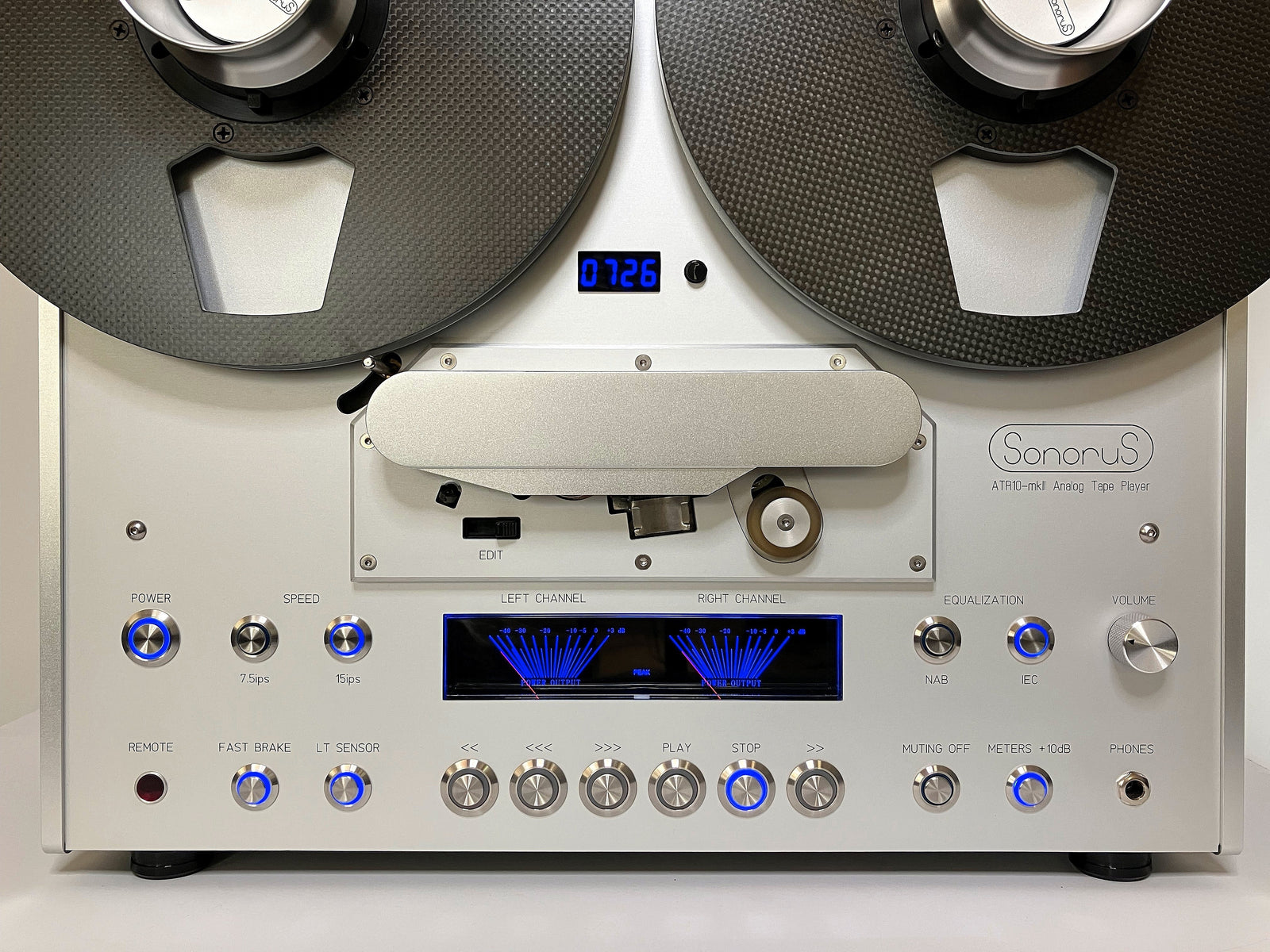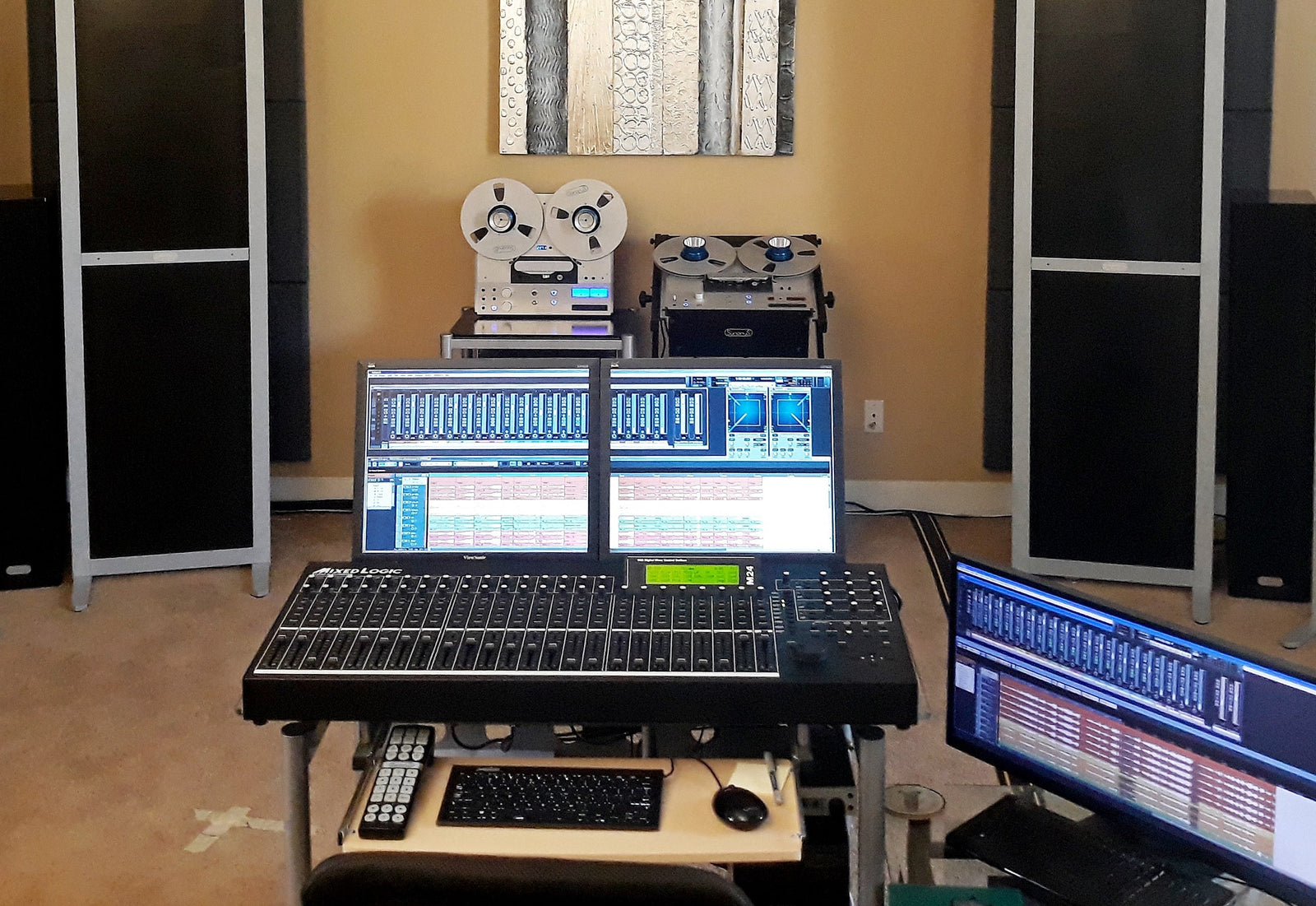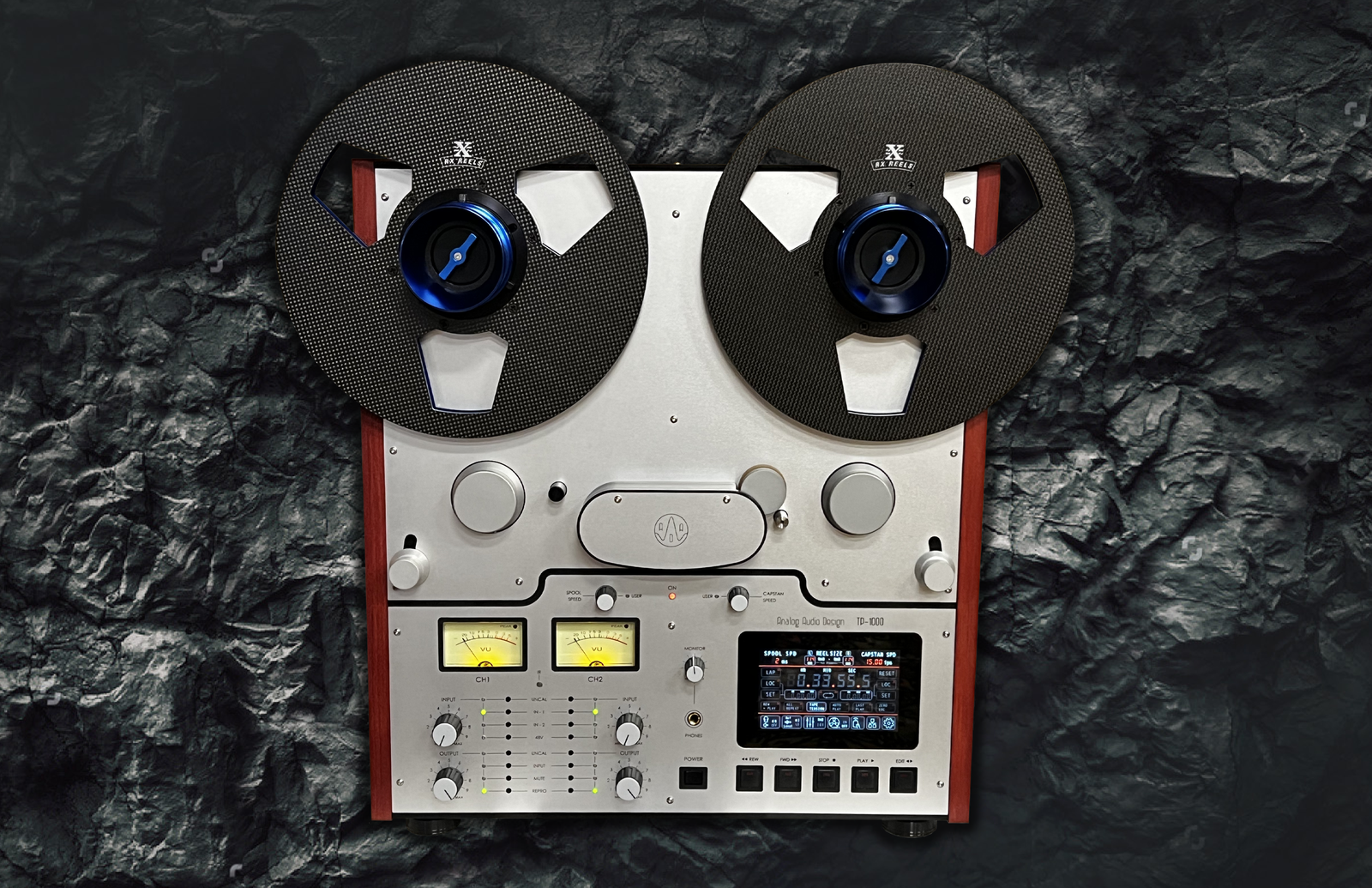Your Cart is Empty

For decades, audiophiles have debated the merits of vinyl versus digital music. But another format has been reemerging in recent years: reel-to-reel magnetic tape.
And why is reel-to-reel making a comeback? Because modern reel-to-reel tape produces superior sound quality.
In this article, we’ll explore:
First, let's start with some background on reel-to-reel magnetic tape recording. Introduced in the 1930s as a way to record audio, reel-to-reel quickly became the standard for professional recording studios.
Magnetic tape technology continued to evolve throughout the 20th century, with new formulations and coatings improving its sound quality. But as digital recording technology emerged in the 1970s and 1980s, magnetic tape fell out of favor.
Tape formulations were often inconsistent, and tape machines were prone to mechanical issues. As a result, many audiophiles abandoned tape in favor of vinyl or digital formats.
The resurgence of reel-to-reel has its origins in a 2009 audio show, The Rocky Mountain Audio Fest, where a tricked-out reel-to-reel player was used as the source to play music. Vinyl on fancy turntables was de rigueur at the time, and reel-to-reel was considered antiquated technology. But the sound quality blew people away, and it sparked a renewed interest in the medium.
One of the attendees at that audio show was Jonathan Valin, an influential critic for audiophile bible The Absolute Sound. In a January 2010 blog post, Valin made mention of what he “called the best source component at RMAF (and would’ve named the best source component at CES, if we’d given an award for best source component)”—United Home Audio’s UHA-HQ Tascam 15, a two-track analog tape deck.
Fast forward to early 2013. Shock waves hit the audiophile community when, in an Absolute Sound article, Valin came down definitively in favor of reel-to-reel over vinyl.
He describes a visit from Greg Beron of United Home Audio, who brought his latest reel-to-reel tape deck, the TASCAM Pro Phase 11, for Valin to hear. That deck was the result of 6 years of experimentation and refinements, especially regarding frequency range.
About two years before, Valin had reviewed United Audio’s Phase 9 reel-to-reel tape deck. At that time, he was frustrated by the lack of availability of affordable quality reel-to-reel recordings. He found LPs bested the lower-quality recordings.
In between reviewing the Phase 9 and hearing the Phase 11, Beron sent him a number of reel-to-reels mastertapes. The incredible sound quality of those tapes led Valin to decide to revisit reel-to-reel, and resulted in Beron’s visit with the Phase 11.
At the time, Valin had in his home listening room upwards of $300K worth of equipment, including the top-of-the-line, $100K+ Walker Proscenium Black Diamond record player. When he compared listening to tape on Beron’s new deck with listening to vinyl on that incredibly high-end system, he found, to his amazement,“that the sonic excellence of such a system could be not just a little bit improved, but unequivocally, unforgettably, sensationally, dramatically, earth-shakingly improved.”

The experience led him to state that “the record player, even the very greatest ones…is no longer the king of sources” with no room for argument. “This is simply the best source component I’ve ever heard by a considerable margin.”
On top of that, he later had the opportunity to listen to a mastertape created with reel-to-reel of his favorite album, and he was stunned. “Folks, to say that this was a ‘better’ sound, even ‘an extraordinarily better’ sound, doesn't cut it. This was a revolution…the whole thing was so amazing it left me agog. I have never heard rock and roll reproduced more powerfully and realistically…in my entire life.”
He also described the $17–21K Phase 11 deck as a bargain compared to a great quality turntable, and suggested that the number and quality of reel-to-reel titles then available might justify the purchase. That was 2013; 10 years later, there are many more titles available. Later on in this article we’ll list a few artists who are recording on reel-to-reel tape.
Why is modern reel-to-reel so different from the reel-to-reel abandoned in the 1970s and 1980s?
As you probably gathered from the story above, modern tape machines have improved a great deal.
The machines used in the 1970s and 1980s were often prone to mechanical issues, resulting in degraded sound quality. Today's tape decks, when properly serviced or rebuilt, can be much more reliable and accurate, allowing for higher fidelity recordings.
Modern and some hybrid tape decks also have advanced electronics and mechanics that reduce wow and flutter, resulting in a more stable and accurate playback. (See more on new and hybrid decks at the link to be found at the bottom of this article).

In addition to the advancements in tape machines, magnetic recording tape has come a long way since the 70s and 80s.
Modern tapes are manufactured using better materials and processes, resulting in a higher quality product. For example, some modern tapes are made using a special coating that allows for better magnetic alignment, resulting in improved signal-to-noise ratio and overall sound quality.
These advancements in tape manufacturing technology have led to a resurgence of interest in magnetic recording tape, particularly among audiophiles.
According to Mark Pescovitz, CEO of recording equipment manufacturer Mytek Digital, "The quality of tape, especially when used in conjunction with the highest quality analog recording equipment, can result in a level of sound quality that simply cannot be achieved with digital recording technology."
This sentiment is echoed by many others in the hi-fi industry, who view reel-to-reel tape as the ultimate medium for capturing the warmth and depth of analog recordings.
So why does reel-to-reel tape sound better than vinyl? There are several key differences that improve the sound.
One key reason is dynamic range. According to an article in The Verge, tape “has greater dynamic range than vinyl, with extraordinary sound at the frequency extremes: the treble and bass.”
An article in Sound on Sound confirms that tape can handle a much wider range of volume levels than vinyl.
More dynamic range means that music recorded on tape can have subtle nuances and details that are lost on vinyl.
Another reason is frequency response. Tape can capture a wider range of frequencies than vinyl can, which can result in a more natural and detailed sound. In fact, some audiophiles claim that tape can even sound better than high-resolution digital formats.
Very little signal processing is required for reel-to-reel, while vinyl requires a lot.
When making a record, the dynamic limits of vinyl require compressing the master tape signal. Many of the highs and lows are lost.
In contrast, dubbing tapes is much simpler. The original master tape signal is transferred relatively unscathed.
To quote an article in The Verge, “Signal processing is the enemy of hi-fidelity. The less studio voodoo the master tape (MT) is subjected to, the better.”
A final key point is playback. Turntables can introduce all sorts of mechanical issues that degrade the MT signal even further: rumble, skips, speed stability, inner groove distortion, and more.
In contrast, reel-to-reel is extremely streamlined. At the point of signal retrieval, the tape is the only moving part. That one moving part travels straight across a stationary playback head. This efficient operation means higher fidelity.
Further proof of reel-to-reel’s superior sound is evidenced by the growing number of modern recording artists choosing to record their music using the medium.
One example is singer-songwriter Ryan Adams, who recorded his album "Prisoner" entirely on tape. In an interview with Tape Op, Adams explained that he prefers the "intimacy and vulnerability" of tape recordings.
Another example is the band Fleet Foxes, who recorded their album "Crack-Up" on a vintage Studer tape machine. In an interview with Stereogum, frontman Robin Pecknold praised tape’s "warm and natural" sound and explained that it helped capture the live feel of the band's performances.
Other notable examples include Jack White, Beck, and The Black Keys. These artists recognize the unique sonic characteristics of reel-to-reel tape and believe that it allows them to capture a more authentic and organic sound.
The resurgence of interest in reel-to-reel tape at audio shows and among audiophiles also indicates reel-to-reel is winning the battle against vinyl.
High-end audio shows, such as the AXPONA in Schaumburg, Illinois and the High End Show in Munich, have been growing in popularity.
These shows feature demonstrations of the latest and greatest audio equipment, including reel-to-reel tape machines, and have helped to spark a renewed interest in the medium.
Audiophiles have been showcasing their tape machines and recordings, sharing their love for the format with others. At shows and on online forums, audiophiles have been discussing the benefits of tape and sharing their experiences with modern tape machines and formulations.
In recent years, tape manufacturers like ATR Magnetics and Recording the Masters have seen increased demand for their products.
One reason for the renewed interest in recording on reel-to-reel tape is a growing dissatisfaction with the digital recording process, which many feel results in a sterile, lifeless sound. Reel-to-reel tape, on the other hand, is seen as a way to capture the warmth and depth of analog recordings.
One of the strongest arguments for vinyl has been its "warm" and "analog" sound that can't be replicated by digital formats. Reel-to-reel tape also has that warm analog sound. Tape machines and formulations are more consistent than vinyl as well, resulting in a more predictable and reliable sound. The quality of the pressing, mastering, and playback equipment can all impact the sound of a vinyl record.
Reel-to-reel tape recording has a significantly higher dynamic range and lower distortion than vinyl recording. Tape has a warmer, more natural sound than digital with much greater depth and nuance than vinyl. So reel-to-reel is winning over fans of both digital and vinyl recording.
Reel-to-reel audio recording has truly made a comeback in the past 15 years. This can be seen in the growing number of recording artists choosing to record on reel-to-reel, the resurgence of reel-to-reel tape at audio shows and among audiophile enthusiasts, and recognition from critics in influential audio magazines.
Reel-to-reel has moved into the mainstream. The Absolute Sound’s Editor’s Choice Awards are some of the most influential in the industry. The 2023 awards featured 5 tape decks, a combination of new and hybrid decks in a variety of price ranges. The awards debuted a category for tape decks in 2022 and are continuing the tradition, giving mainstream recognition to the medium and indicating its ongoing popularity and increasingly wider availability.
Looking for a great player? New, Used and Hybrid Reel-toReel Players for Sale Today: Ultimate Guide to Reel-to-Reel Players
The surge in popularity of reel-to-reel is simply due to the superior sound quality. Compared to vinyl, reel-to-reel comes out on top. To quote Rene Chun of The Verge, “Even the most dubious critics find no ambiguity here. The verdict: tape sounds better than vinyl. Period.”

Sources:
“The Ultimate Source Component?” Blog post by Jonathan Valin in The Absolute Sound, January 22, 2010
“United Home Audio’s New Tape Deck and Next-Gen Reel-to-Reel Tapes” by Jonathan Valin in The Absolute Sound, January 23, 2013
“Reel-to-Reel Tape is the new vinyl: A guide to the latest trend in retro audiophilia” by Rene Chun in The Verge, October 5, 2015
2023 Editors’ Choice: Tape Decks, The Absolute Sound, March 31, 2023
Subscribe to our Reel News Newsletter for industry news, reel-to-reel product information and insight. Zero spam, and we never sell your info.
To see a sample of a Reel News newsletter click here.
Does reel to reel tape sound superior to vinyl?


This post delves into the topic of making enhancements to the actual recorded media on reel-to-reel tape. Numerous vinyl albums have been remastered, and indeed, several hundred tapes have undergone remastering from the master or near-master. These offer notable improvements in sound quality compared to the original recordings. Sonorus Audio offers a Holographic Imaging tape remastering service explored here.

Analog Audio Design's first product, the TP-1000 is wholly constructed from new components, utilizing technologies such as computer-aided design and advanced testing tools to augment tape transport and minimize distortion.
The all important heads are from AM Belgium, the same company that inherited the head technical specs directly from Studer / ReVox when they shut down.
The TP-1000 stands out as a three-motor machine using DC motors, all uniquely coupled by a belt and a flywheel to a modern design. Why? To reducing the cogging and flutter commonly associated with DC motors.